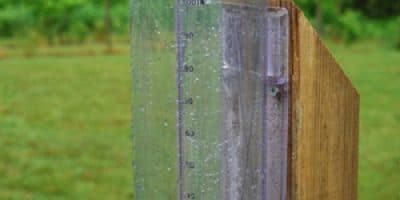Not all weather stations are created the same. Depending on the station you purchase, the type and quality of sensors will vary, and typically (but not always) the higher priced models offer more accurate measurements.
Before you spend hundreds of dollars on a top of the line unit just for the accuracy, don’t let poor sensor placement ruin otherwise solid performance. Top of the line weather stations cannot compensate for this no matter how good their accuracy is. Knowing how and where to place your sensors is vital if you plan to compare your data to other stations or get an accurate picture of what the weather’s doing.
The Quality of the Instruments Affects Accuracy
Your basic store-bought weather stations are attractive for their low price but often suffer from the most significant errors in accuracy due to their low-quality construction and longer recording intervals. Sensors in these units are cheap because it allows for manufacturers to make the station affordable to a wider variety of consumers, not just the dedicated enthusiasts.
While you don’t have to spend a lot of money on a weather station, we recommend staying away from the models you might find at Walmart, The Home Depot or other retail stores. Also, you want to pay attention to accuracy claims made by the manufacturer.
We consider the Davis Instruments Vantage Pro2 to be the ‘gold standard' of home weather stations, and here’s the accuracy of the various instruments of the Pro2 with correct siting.
Use these accuracy ranges as a guide:
- Temperature: ± 0.5°F
- Humidity: ± 2%
- Dewpoint: ± 2°F
- Rainfall: ± 4%
- Barometric Pressure: ± 0.03” Hg
- Wind Direction: ± 3°
- Wind Speed: ± 2 mph (2 kts, 3 km/h, 1 m/s) or ± 5%, whichever is greater
It’s likely that many stations will not match up completely, and not be as accurate. For the best experience though, we do recommend that any home weather station you purchase at least match or do better than half of the variables, and are not far off on the others that don’t.
Also, look for a weather station that provides you with updated readings at the shortest intervals possible. Davis stations send an update to the display for wind readings every 2.5 seconds, outside temperature every 10-12 seconds and rainfall every 20-24 seconds. Weather can change quickly, and your station won’t capture these quick changes if the station records measurements in minutes not seconds.
Home Weather Station Construction and Radiation Shielding
The accuracy of the sensors is not the only variable that you’ll need to keep in mind when considering a weather station. Sensors need to be durable as they are out in the elements for an extended period. While all station sensor housings these days are made of plastic, we’ve found lower end stations use a cheaper type of plastic that degrades quicker, resulting in a shorter usable life.

Davis Vantage Pro2 with a fan aspirated radiation shield.
Also, look for radiation shielding around the temperature and humidity sensors. These readings are going to be far off if you cannot keep the sensor housing in the shade during the day without it. Some integrated sensor suites place these sensors inside of the housing for all the sensors, and even if the manufacturer claims sensor accuracy, readings will always err high in direct sunlight.
The best stations have these sensors located on the bottom of the housing within louvered shielding: this allows air to pass through freely. If you can afford it, buying a weather station with a fan aspirated radiation shield is recommended for the most accurate readings. Fan aspiration removes built-up heated air inside the shielding when winds are calm.
Correct Home Weather Station Siting
Once you have researched, chosen, and received your weather station, your next task is to find the right place to put your instruments. The preferable location for your instrument package is in a position free of obstructions and not in direct sunlight for the entire day. Keep the sensor package in a grassy area away from macadam and other sources of radiative heat.
Temperature and humidity readings should be taken at five feet above the ground, in a shaded area (or within some type of radiation shielding in sunlight). Your rain gauge should be placed as far away from obstructions as those obstructions are high. The gauge should also be high enough to prevent any splashback from the ground.
Wind direction and speed instruments should be placed as high above any surrounding obstructions as possible. World meteorological standards call for these sensors to be placed at 10 meters (33 feet) off the ground, but for most people that is too difficult to accomplish. If you can’t, at least try to get the instruments 10 feet above the ground. Read our guide on weather station mounting ideas and solutions to help install your station correctly.
Don’t forget a compass: you’ll need this to correctly align the wind vane to give you accurate direction readings. Weather stations don’t detect this automatically.
A Final Word
We recommend that you purchase the best weather station you can afford, rather than the cheapest. Price plays a large part in quality here. Also, think of it this way: cheaper stations will have a shorter lifespan, so you might end up having to purchase a station sooner had you not purchased a higher quality model. Don’t make that mistake.






Hey Ed, im thinking of buying the ambient weather WS-2902 I have an acurite 5n1 station already im thinking of the osprey as a second station to go on the roof of my house, as i have heard that they osprey is more accurate what is your opinion on the osprey if you have any backround on this weather station